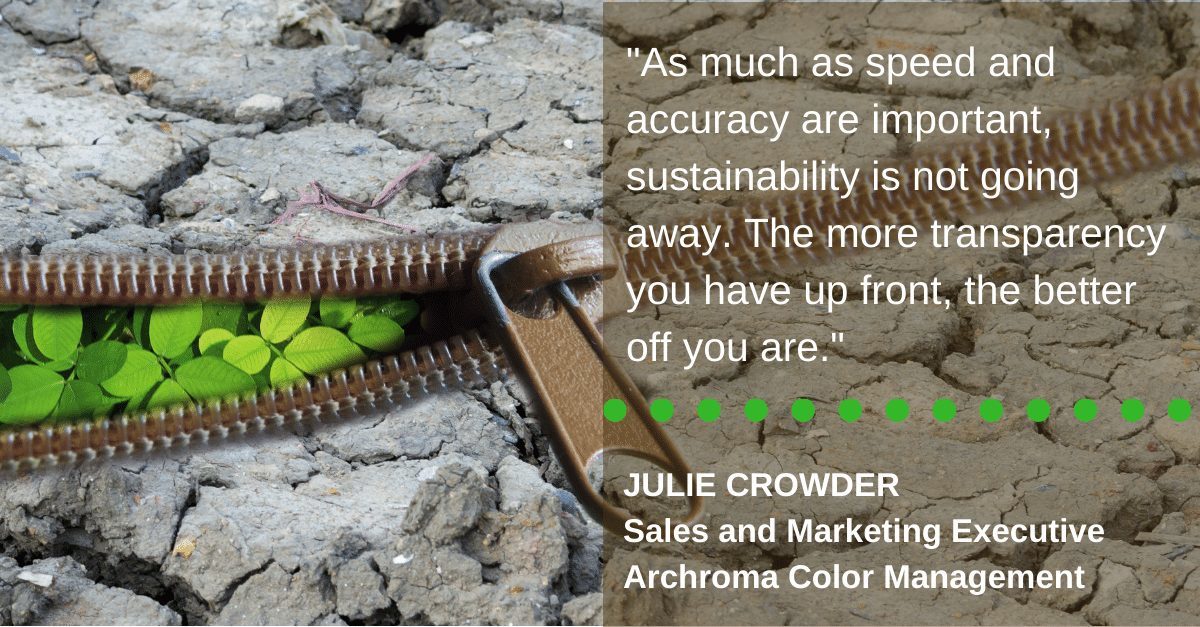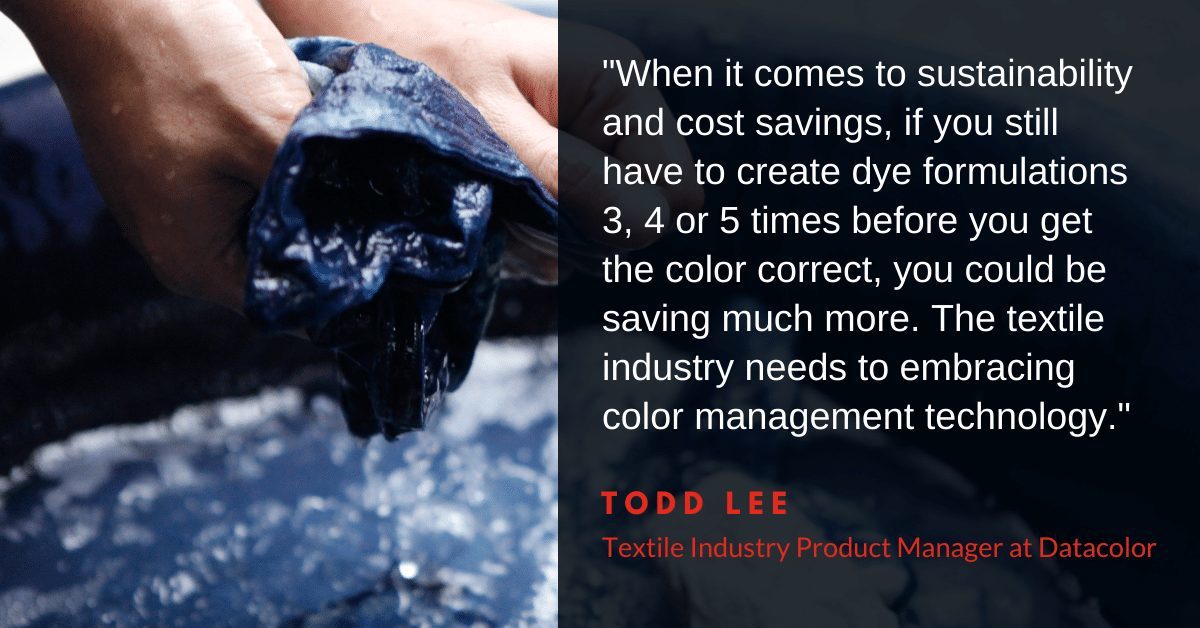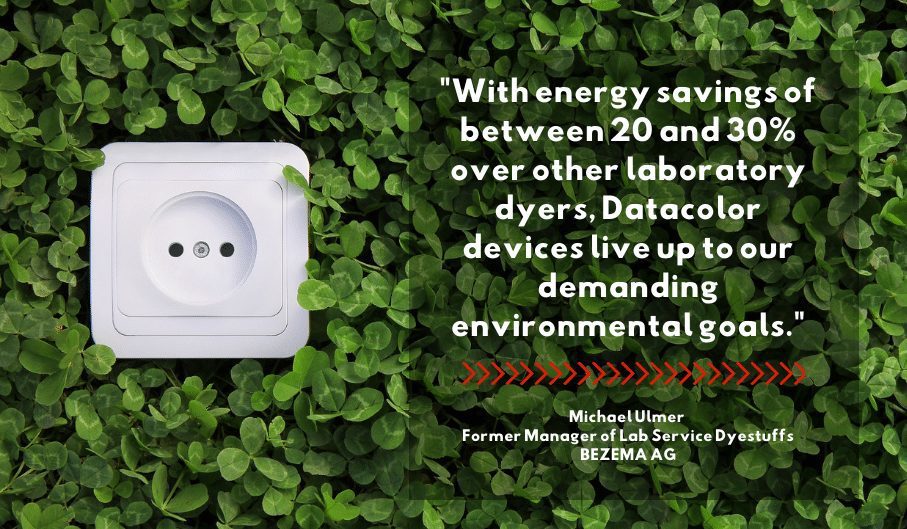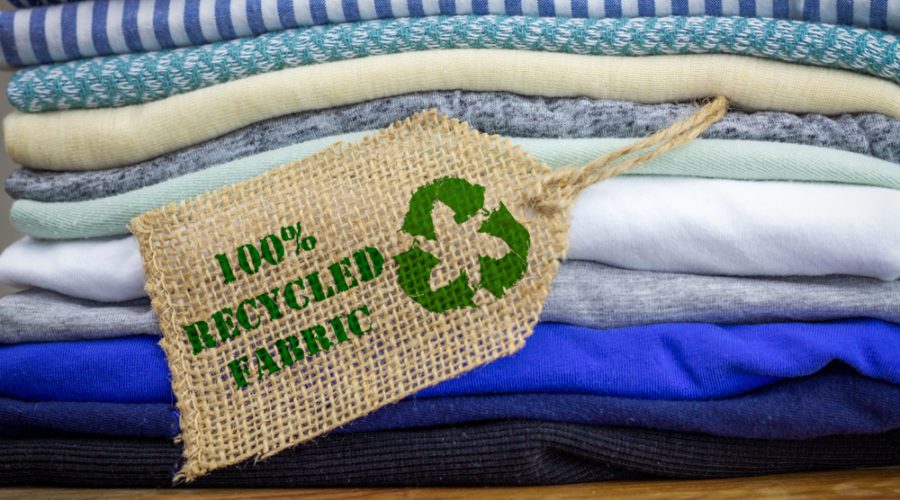“Sustainability and environmental impact are becoming increasingly important to both businesses and consumers. Business is looking at ways to reduce environmental impact by developing novel processing methods.” Daniel Aitken, Datacolor UK Service Manager.
Here is a pop quiz for you: What is one major topic that everyone is discussing, but no one seems to have completely nailed? You guessed it. It’s sustainability. No matter what industry you are in, you have probably heard the word “sustainability” at least a couple of times a day. Companies all over the world are coming up with five-year plans to go 100% green.
But even if the change to become more environment friendly is not a top priority at your company right now, there are some color management steps you can take immediately to score points for your good karma balance. This is especially valuable because, as we know, color dyeing is one of the worst offenders when it comes to pollutants, water waste and energy consumption. In 2015 alone, the gas footprint from textile production was roughly 1.2 billion tons of CO2, which is more than all international flights and maritime shipments combined. Textile dyeing and treatment is accountable for about 20% of water pollution globally. And while your company’s process for dyeing is an internal decision, Datacolor CAN help make that process more efficient —which could support your sustainability efforts in a big way.
Defining Sustainability
For the sake of discussion, we think it’s important to define how we view sustainability. You can have your own definition, too, and that is OK. Some companies use cradle-to-cradle certification (a globally recognized measure of safer, more sustainable products made for the circular economy) as an example, while other companies may define it as a reduction of waste. Datacolor addresses sustainability from an efficiency standpoint. By producing the minimum waste possible, you can achieve better operational efficiency and make a positive impact on the environment.

Reducing Physical Samples
Physical samples are so last season. You heard us right. Any time you have to dye a piece of fabric, you are not being sustainable. It’s a fact. And what if you have to do it more than once? The goal should always be to minimize the resources you are spending on sample development. We have already mentioned water and energy waste as well as chemical pollutants which have a negative impact on the environment.
But what about all the time and fuel spent on shipping samples overseas for evaluation? That hurts the environment, too. From where we stand, physical samples need to go (or at least be dramatically reduced).
Easier said than done? Not really. Datacolor Match Textile, for example, can predict the accuracy of color matches and even color fastness before you dye a fabric, reducing the need to do multiple rounds of samples. Datacolor Envision can help to see what fabrics and garments will look like in different hues so that you don’t have to develop physical samples for all colors in the season. And if you want to get even more sophisticated, you can equip your design teams with portable color management devices like the ColorReaderPRO, which helps to capture the color of objects and fabrics on the go without having to purchase and cut them up.
Is 100 Percent Digital Color Evaluation the Future?
Technology now allows development of an entire season digitally without a single physical sample. We understand that you have processes in place involving physical evaluation of samples, and old practices die hard. Our challenge to you: do a pilot project to test it out and see how it works for you. Pick one garment in one line from one season and go completely digital. It will make a big impact and will also show you if the process is feasible for your company.
Do You Really Know the Cost of Sample Development?
Depending on the overall goals of your company, sustainability might not be a priority for you yet. No matter where you are with environmental impact, profitability of the business is always an area of focus. Have you ever considered how sample production can affect your bottom line? Despite the common misconception that color sample development is free, it is actually a very expensive process.
If you calculate the cost of raw materials, dyes, overnight courier services, energy and labor, you will get a seven-figure number of potential waste in just one fiscal year. Some of our customers claim that they easily spend two million dollars on color samples per year. This is a huge potential savings and is worth sharing with your leadership.

Managing color digitally allows you to be more efficient with your time and resources. Moreover, digital color management can help offset rising dye and chemical costs. As per our definition of being efficient, spectrophotometers and color formulation software can help you perform or function in the best possible manner with the least waste of time and effort. Doesn’t it sound nice?
Sustainable Mushroom Leather and Spider Silk
While focusing on your internal processes to attain sustainability, do not forget the new technologies and materials that are now available. New startups are coming to market with the promise to change the fashion world and make a positive impact on the environment overall. Some of our favorite companies transform plastic bottles into swimsuits and produce sneakers out of kelp. But innovation doesn’t stop there. New players have introduced more sustainable materials like leather made of mushrooms and fabrics made with spider silk. It sounds cool and promising, but what does it mean for color departments? Should the color management process be adapted for the new trends? And if so, how?
Controlling Color for the Fabrics of the Future
We know what a standard color management process for textiles look like.
- Inspiration colors from the design team are measured using spectrophotometers.
- Color palettes are evaluated digitally and color standards are communicated to suppliers.
- Unacceptable physical samples get eliminated for more efficient color development
- Frequent quality checks are performed to make sure the production lots match the approved color standards.
An important step in the color management process for the supplier is figuring out the color formula. The supplier must determine what type and amount of dyes are needed to achieve a certain color, and they must also take into account the dyeability of the fabric. Datacolor Match Textile, for example, enables faster color development by providing optimal color recipes and ultimately leads to reduction in shade corrections, dye consumption and overall waste elimination of dyestuff, chemicals and water.

Once the fabric is dyed, it needs to be evaluated against the color standard that represents the ideal color. Some do it visually using light booths and some do it digitally for better objectivity and faster results. This is a quality control step that will determine whether the produced color is good to go or needs to be reworked.
There is really no difference in the way you would manage color for these types of fabrics. Dye is dye and color is color so you can rest assured that Datacolor instruments will help you nail down the right formula and evaluate the result in the same manner as with more common fabrics.
This also rings true with natural dyes. This is another emerging trend that is gaining traction. The process of dyeing may be different, but color management remains the same. Creating a formula and then performing quality control can be done on Datacolor instruments and software or any other digital color management tool of your choice.
Efficient Color Development is Part of Sustainability
All these new technologies are truly promising and disruptive. But can they really reduce the negative impact on the environment? It is important to remember that even the most sustainable materials won’t be able to counterbalance poor processes. It is not enough to adopt sustainable fabrics. The processes need to be optimized, otherwise the waste created due to multiple rounds of dyeing will make the whole concept fail.
Digital color formulation solutions with Datacolor’s SmartMatch optimize recipes and reduce re-dyeings, hence eliminating dyes, water and chemical waste. If any off-color dyes are created in the process, these formulation software solutions can help re-dye it into a different shade or work it into a different batch. This helps to save the materials that would be otherwise wasted.
Additionally, customers want to see high quality and consistency in the clothing they purchase, and sustainable garments are no exception. Brands who choose to work with novelty fabrics and modern technologies need to establish efficient color workflows to make sure that product colors meet customer expectations. This being said, digital color management should be part of modern product development to help achieve sustainability whether you work with cottons or mushrooms alike.
Sustainability is trending. But unlike any other trends that come and go, sustainability is here to stay. We are recycling plastics and bringing reusable tote bags with us for grocery shopping. It is time for color development to be sustainable, too. Are you prepared for the change?








